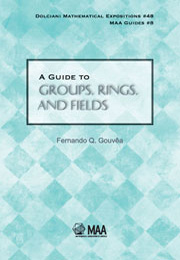1 - Algebra: Classical, Modern, and Ultramodern
Summary
The word “algebra” is derived from the title of a famous book by Baghdadi mathematician Muḥammad Ibn Mūsa Al-Khwārizmī, who flourished in the 9th century. His name indicates that he (or his family) was from Khwārizm, a town south of the Aral Sea in what is now Uzbekistan. (It is currently called Khiva.) Among Al-Khwārizmī's influential books was one on “aljabr w'al-muqābala,” which means something like “restoration and compensation.”
The book starts off with quadratic equations, then goes on to practical geometry, simple linear equations, and a long discussion of how to apply mathematics to solve inheritance problems. The portion on quadratic equations became famous. Al-Khwārizmī explained that he had found that “what people wanted in calculating” was “a number.” He then gave rules for solving quadratics, using no symbols to express them: everything is done in words using specific examples, the first of which was “a square and ten things make thirty-nine dirhems,” i.e., x2 + 10x = 39. “Al-jabr” itself was the process of rearranging and rebalancing equations in order to put them into one of the standard forms to which the rules applied.
When Al-Khwārizmī's book was later translated into Latin, “al-jabr“ became “algebra,” and became attached to solving certain kinds of numerical problems. Much later, algebraic symbolism was invented, the problems were recognized as polynomial equations, and “algebra” became the mathematics of polynomial equations and their solutions.
- Type
- Chapter
- Information
- A Guide to Groups, Rings, and Fields , pp. 3 - 8Publisher: Mathematical Association of AmericaPrint publication year: 2012



